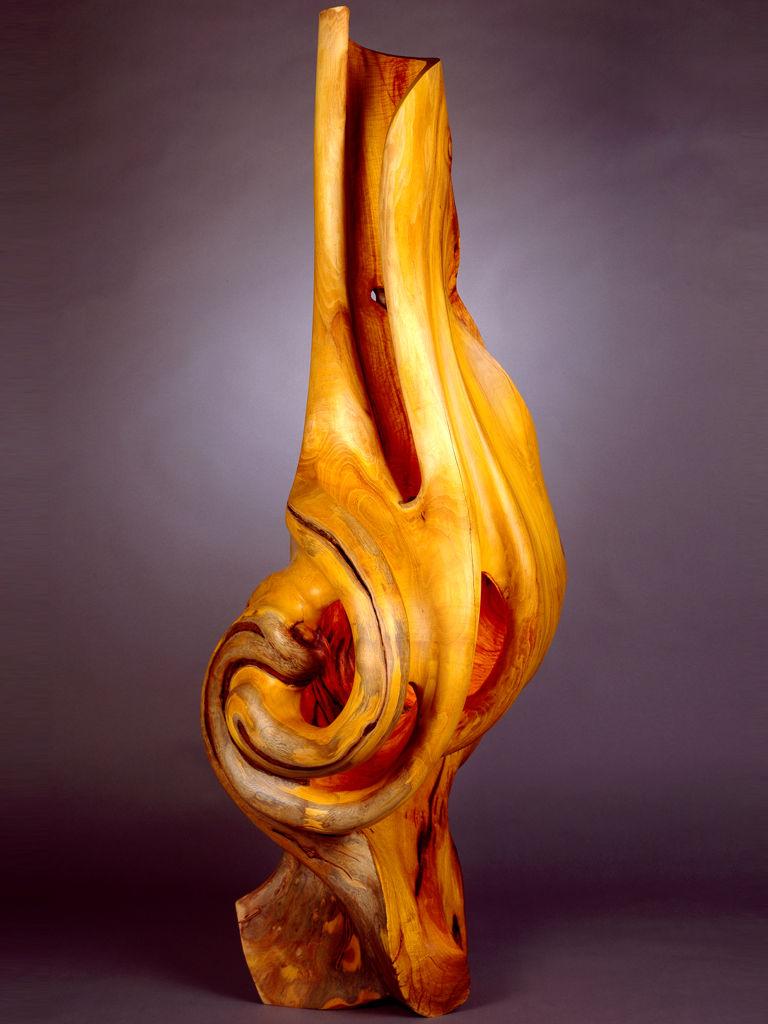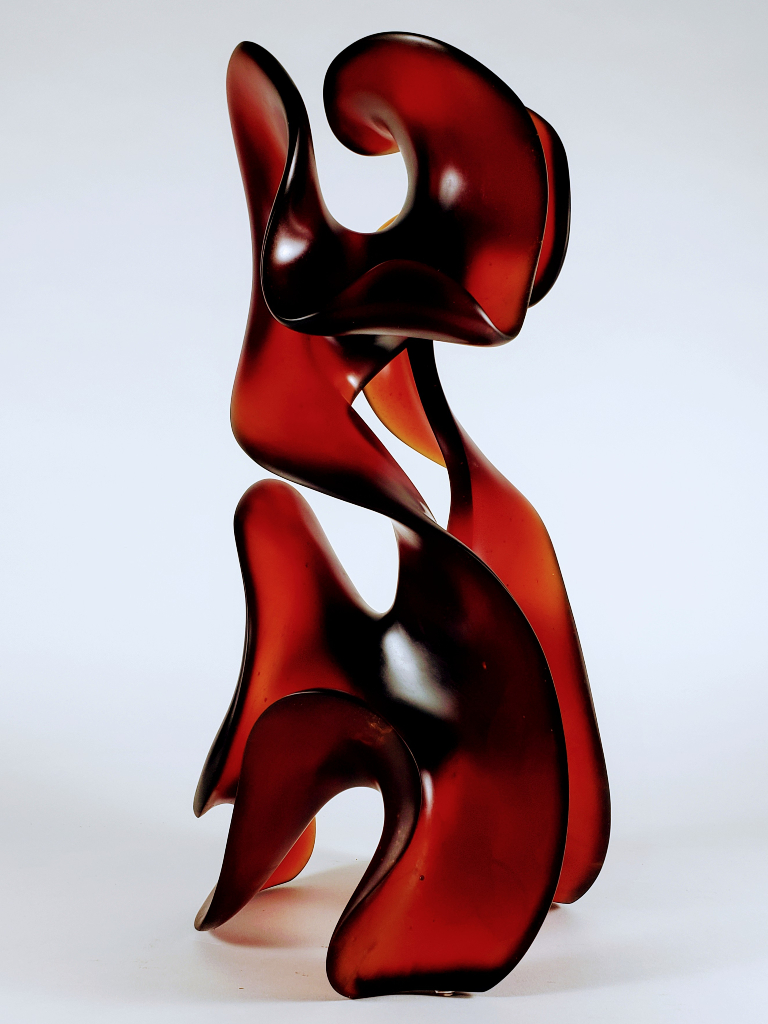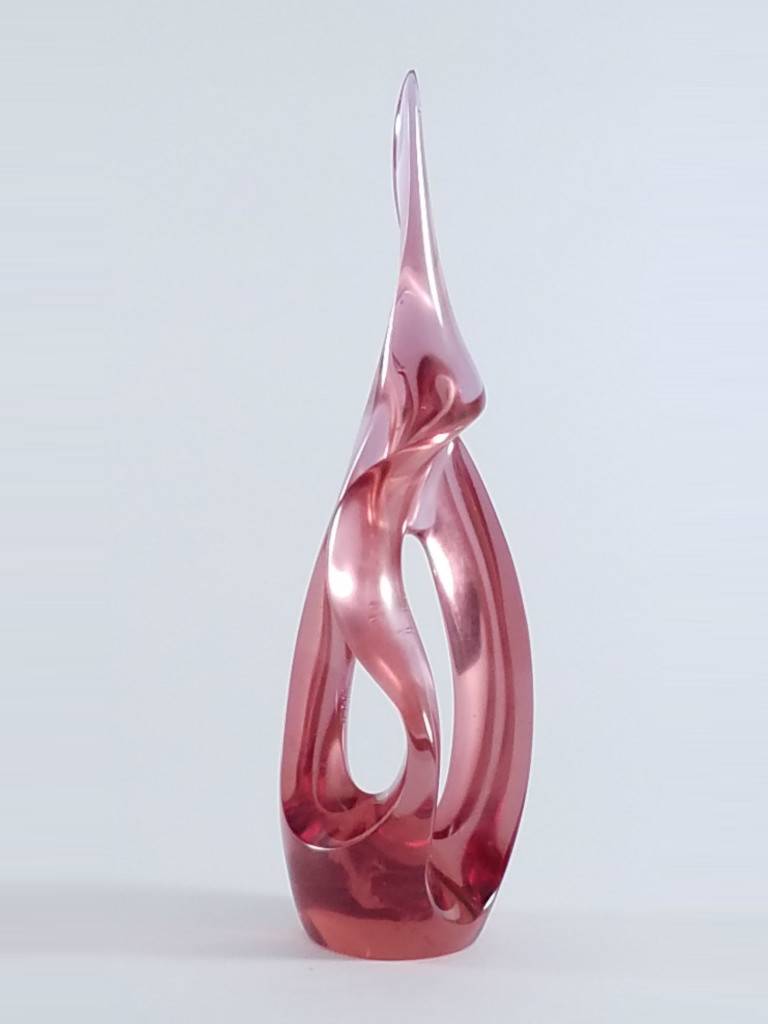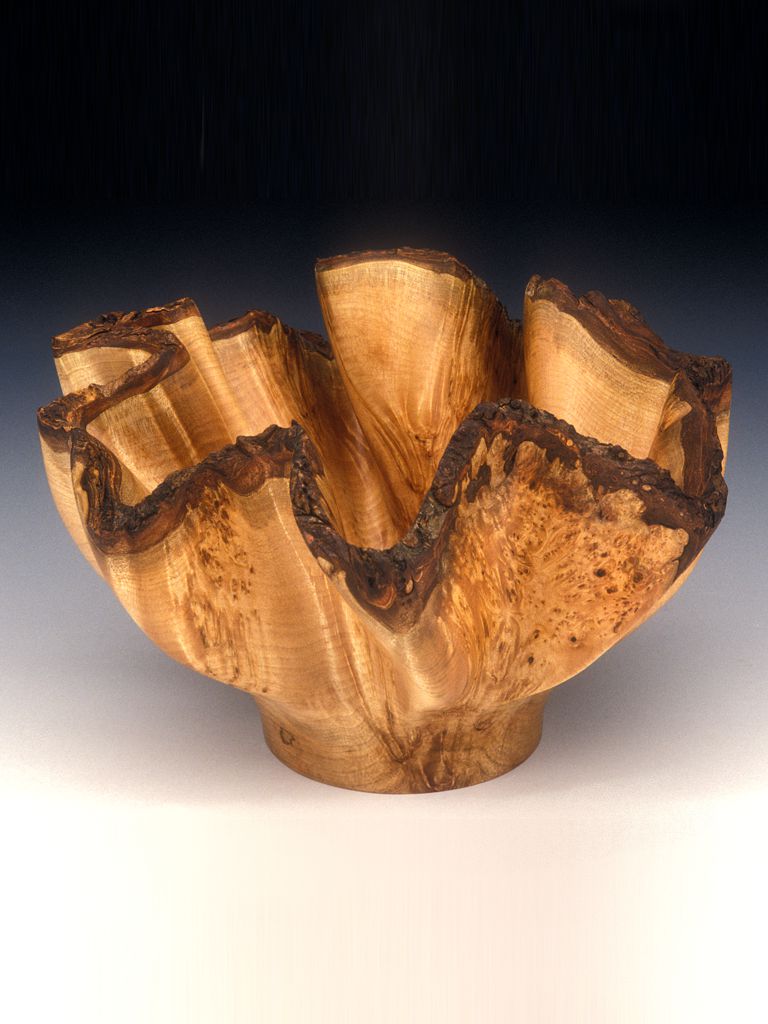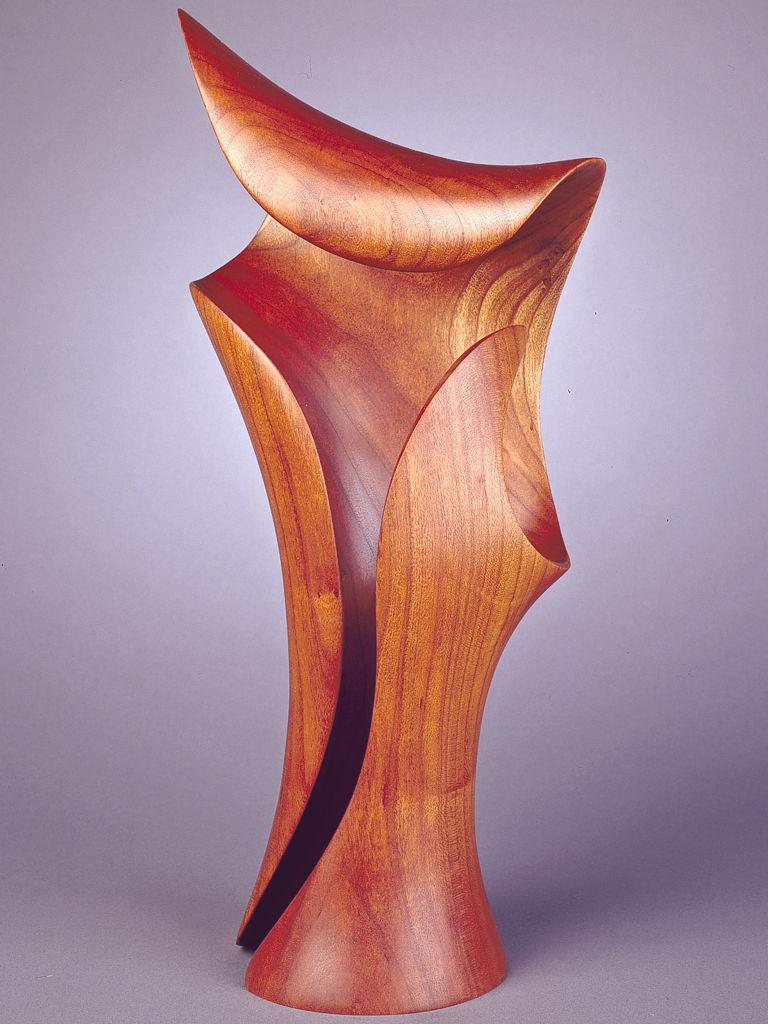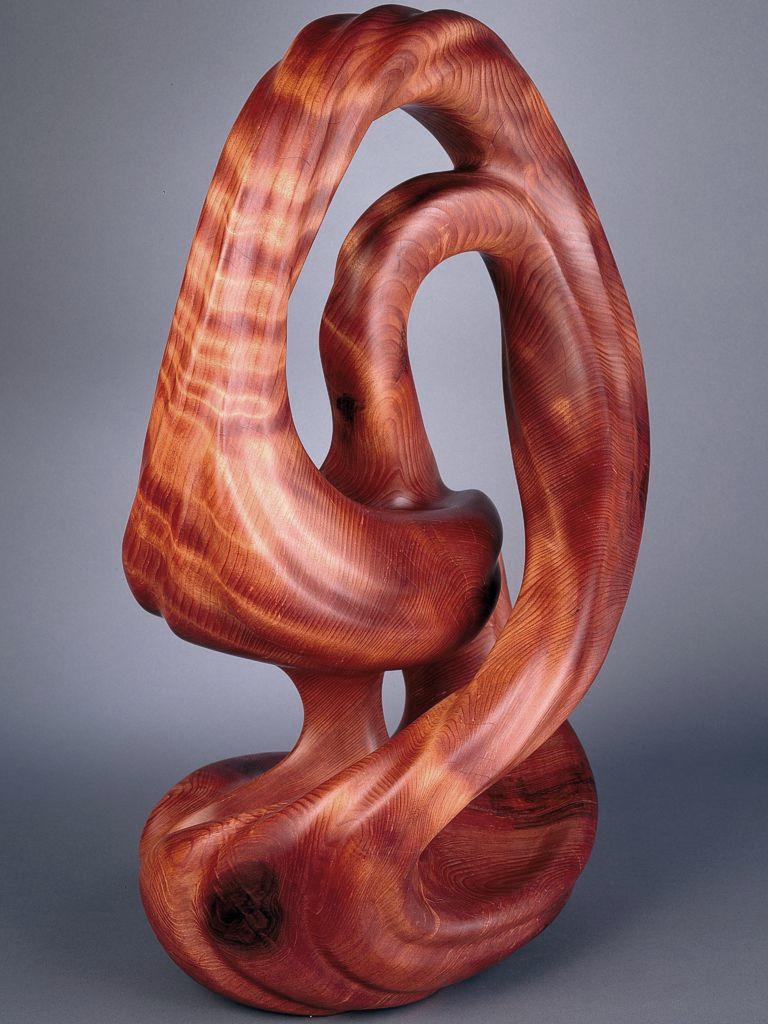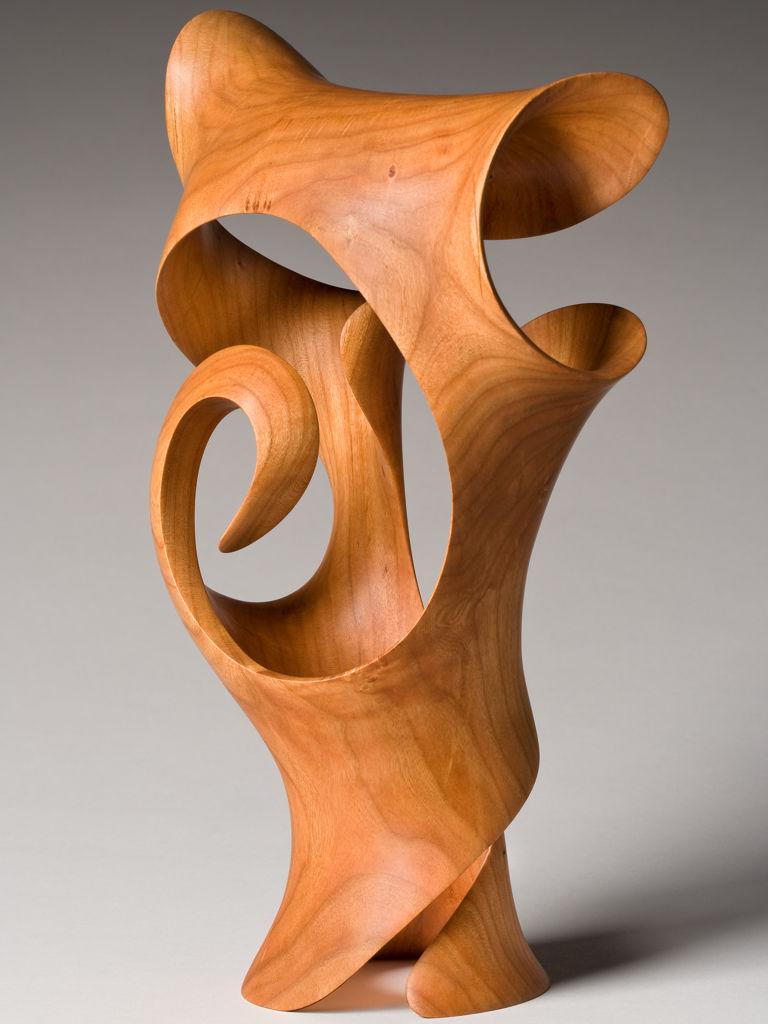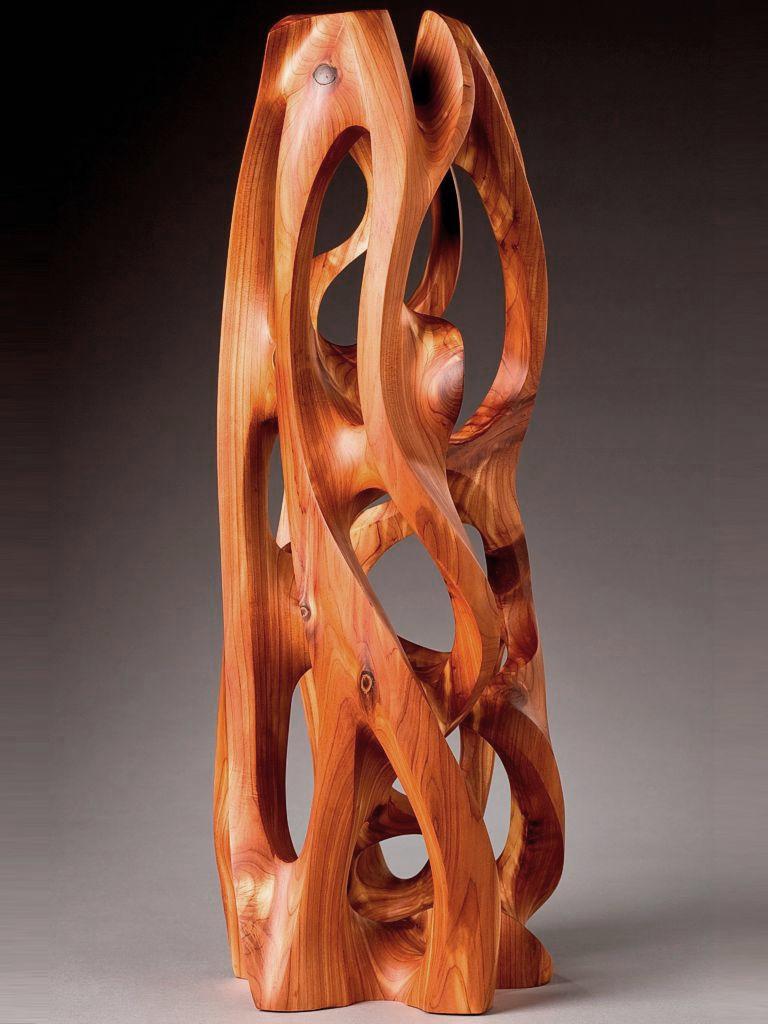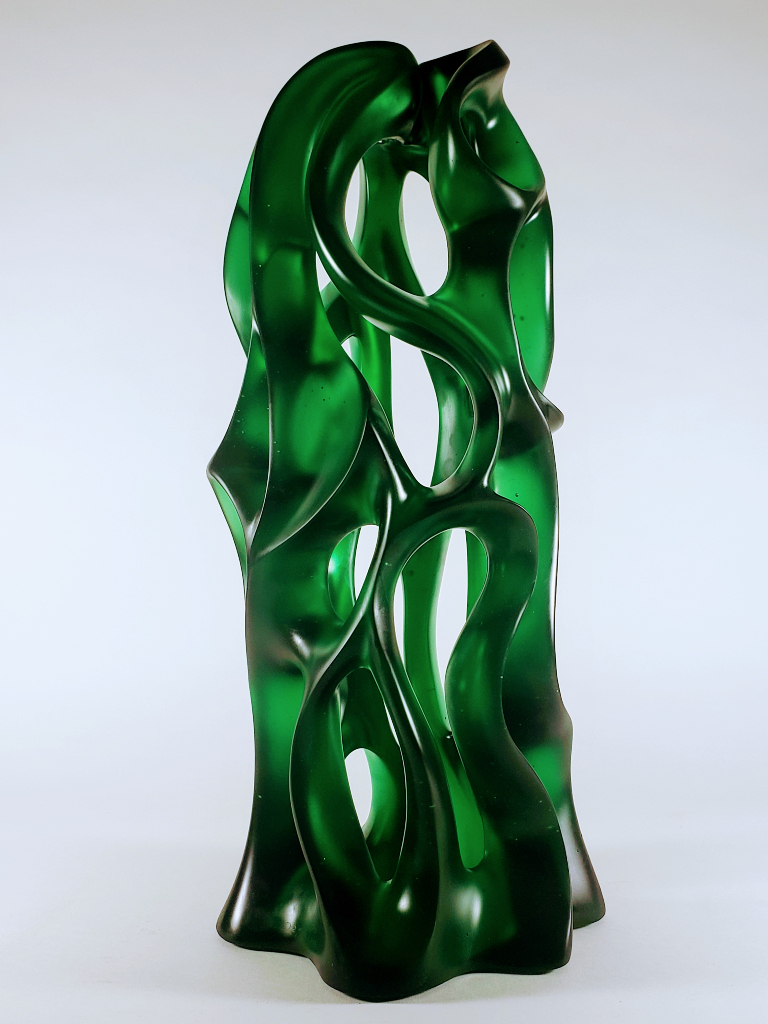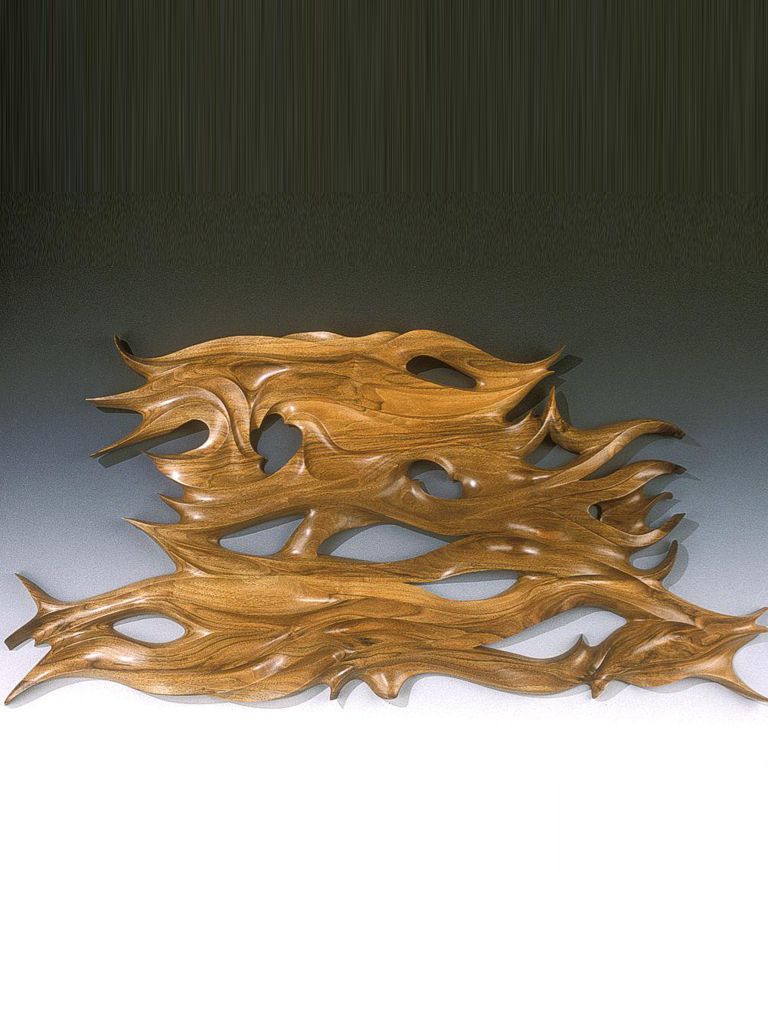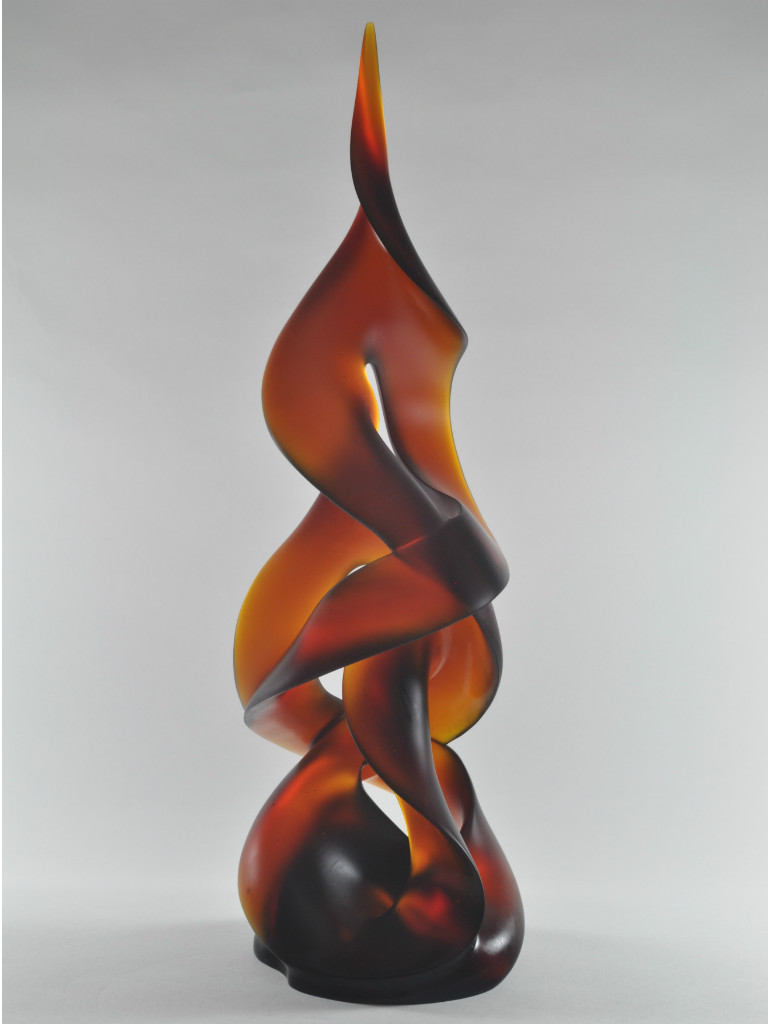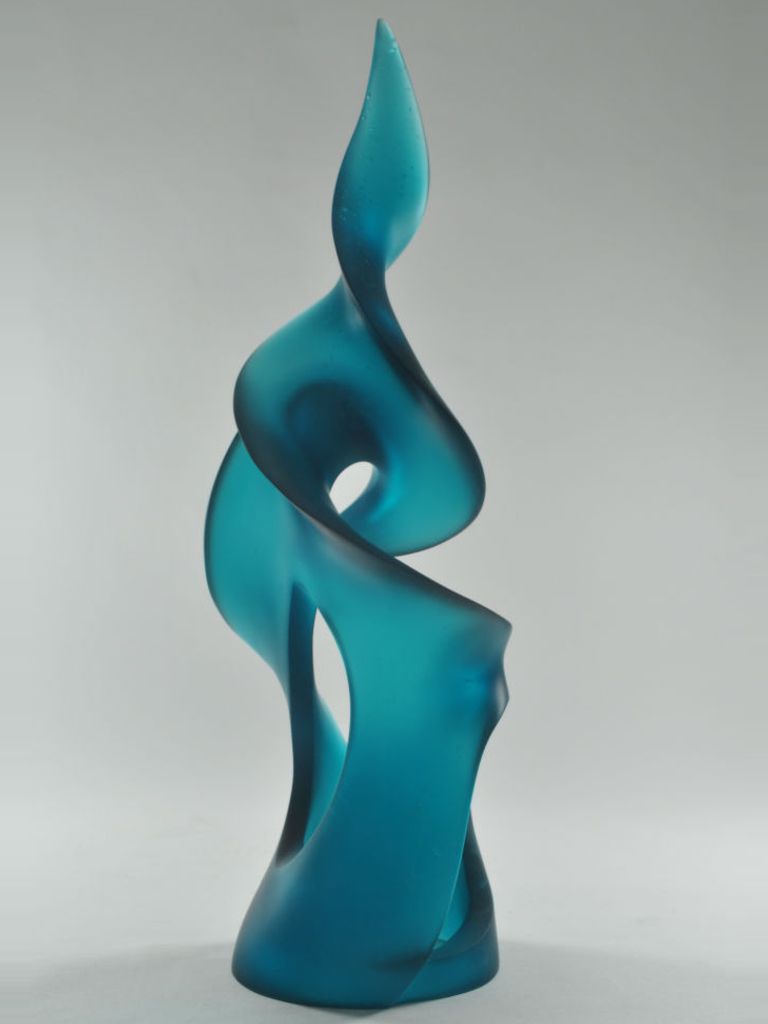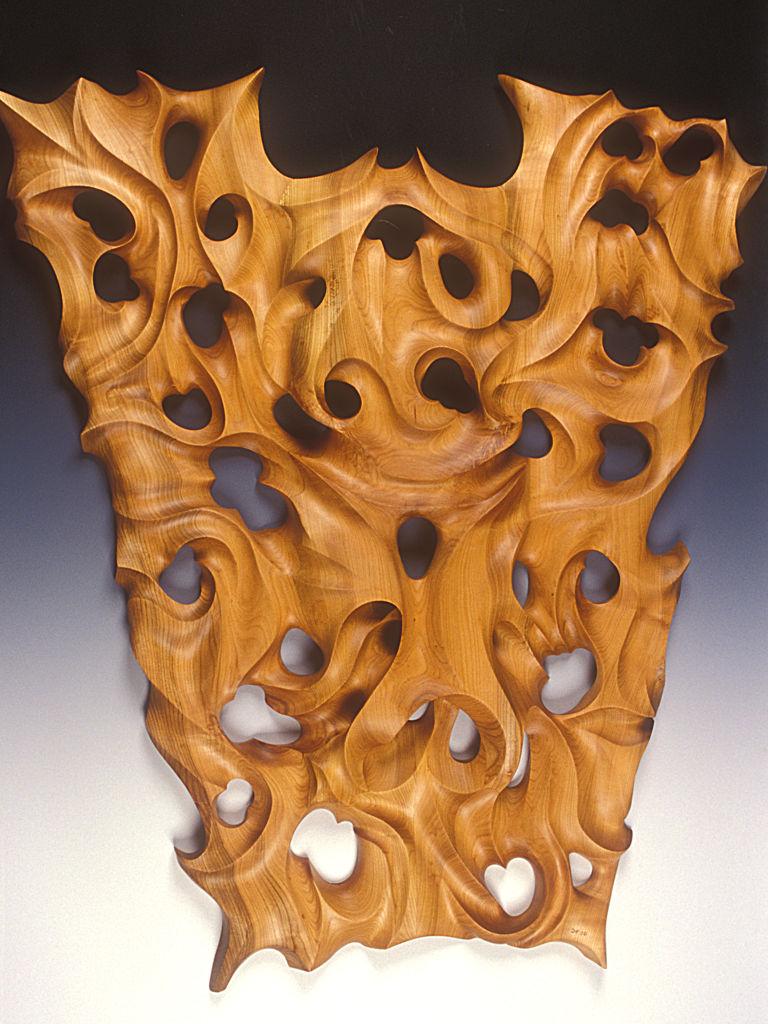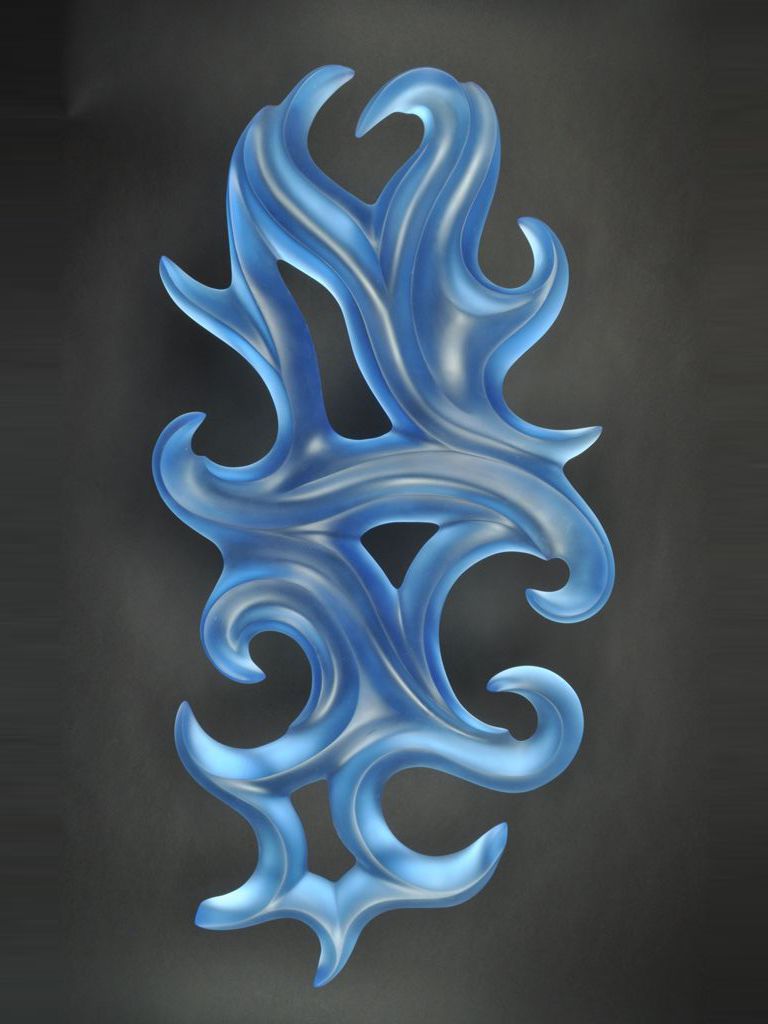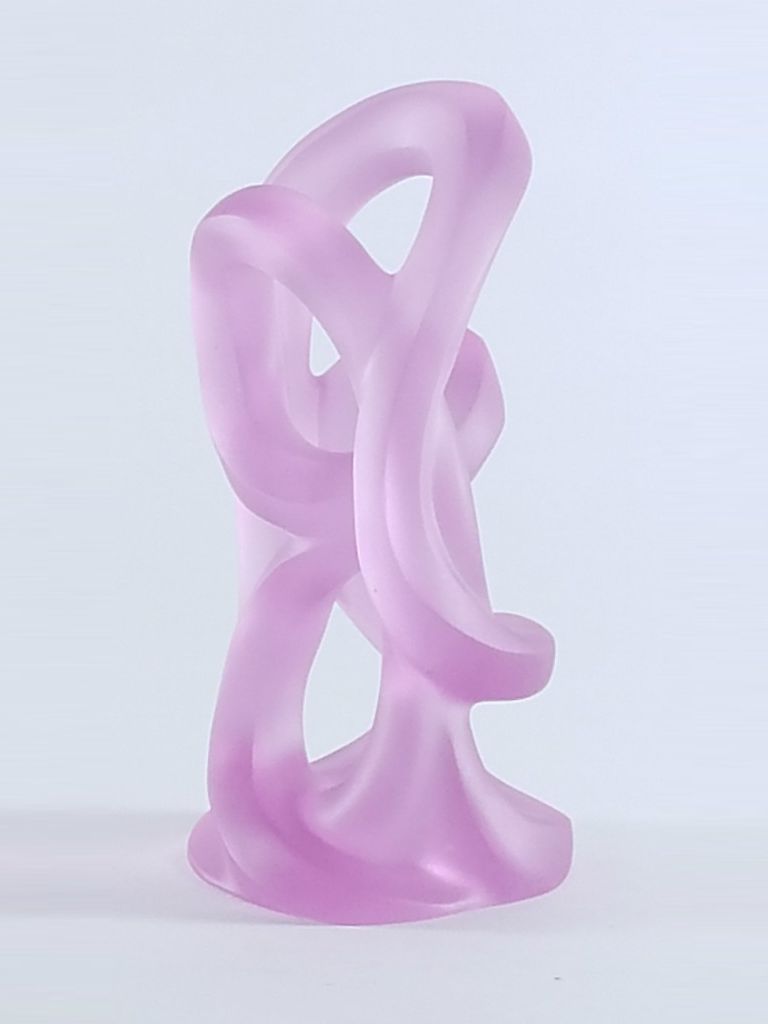Tough contortion emerges as Osage orange wood sculpture
Native Americans used Osage Orange to make their hunting bows because of its strength and elasticity. Farmers considered it a weed tree, but shaped it for fence posts and rails for its strength and longevity. For a long while, I had wanted to create an Osage orange wood sculpture for its color and grain features. Then, a friend with a large property in central Ohio told me he had an entire row of Osage that he wanted to remove. Problem was finding anyone with machinery tough enough.
CHARYBDIS
5′-2″ H, 2′-3″ W, 1′-6″ Dia.
Creating this piece
While walking along his Osage line, I spotted a tree twisted unlike any I had ever seen, sporting double back curves that are my stock in trade. We figured its contorted mass resulted from a tornado strike when it was just a sapling. The violent forces bent the trunk completely over…but then its innate tenacity for life and growth curved it right back to the sun over the years. The result was a distinct ying-yang form that was to become my first-ever whole tree sculpture.
The Process…
However, I’m well ahead of my story. First, three of us spent hours excavating down to the roots, chewing up a couple of chainsaw blades in the process. Next, it took a front end loader to deposit it into the back of a pickup. (It weighed close to 600 pounds!) Then, in my studio I used a hoist and very careful planning to get it situated where it spent the next three years drying out.
Finally, I began sculpting into this powerful, sensual form. In the process, I excavated a large section of rotted wood at the center of the tree. Working from both sides, I removed all material down to the solid wood. Then, there appeared bright gray flashes of…of what? When I cleared the cavity and inspected, three same-sized silver colored objects, one-half-inch in diameter, lodged dead center of the tree, revealed themselves. My speculation? Long ago some hunter or solider with a 50 calibre muzzle loading rifle used this tree for target practice. The rifle balls still reside in the interior of the finished sculpture.

About the name
According to Greek mythology, Charybdis was a nymph-daughter of Poseidon and Gaia, the earth mother. She was feared by seafarers as they sailed through the treacherous waters between Sicily and the toe of Italy. Riptides and whirlpools would occur during tidal flows in this area, and a ship could be caught between “a rock and a hard place.” It seemed fitting to name this undulating twisted piece after such an enduring mythology, because undeniably powerful forces of Nature were at play in the creation of the enduring form she provided for me to sculpt.

